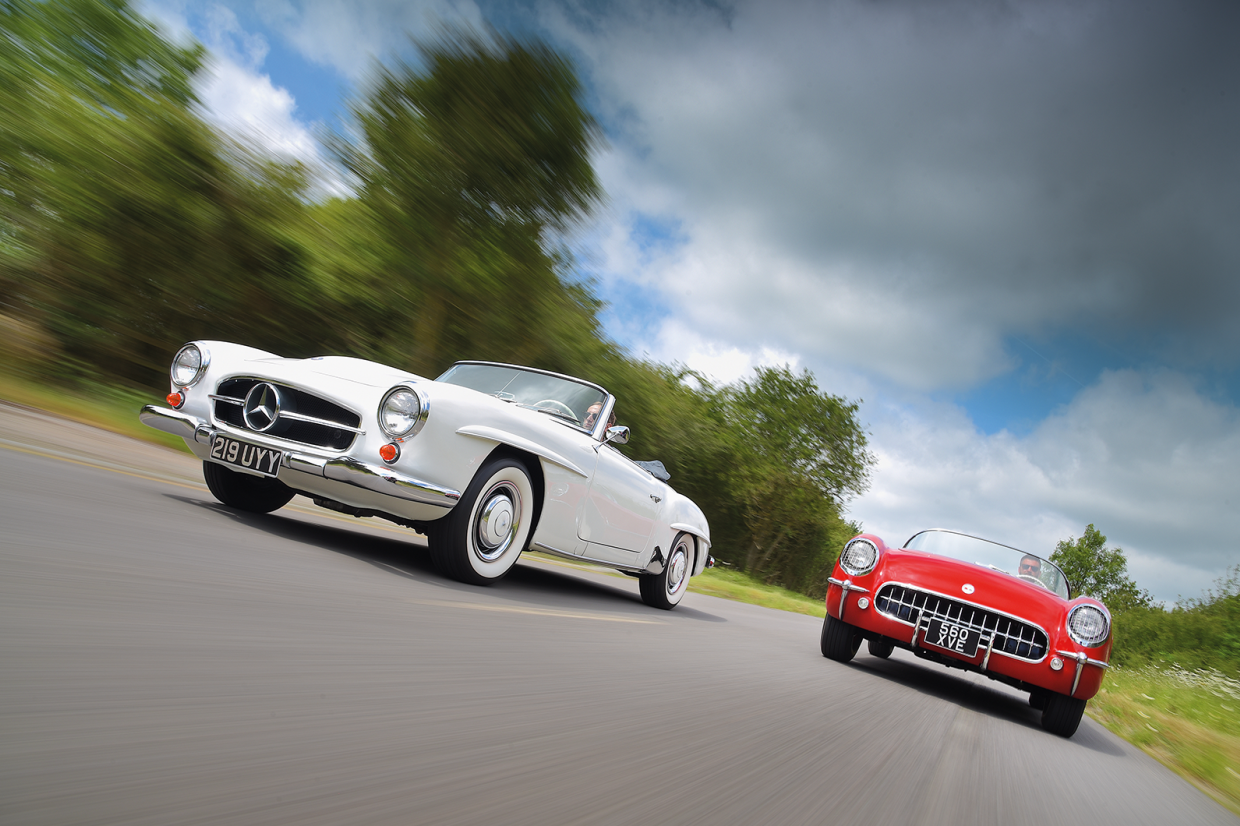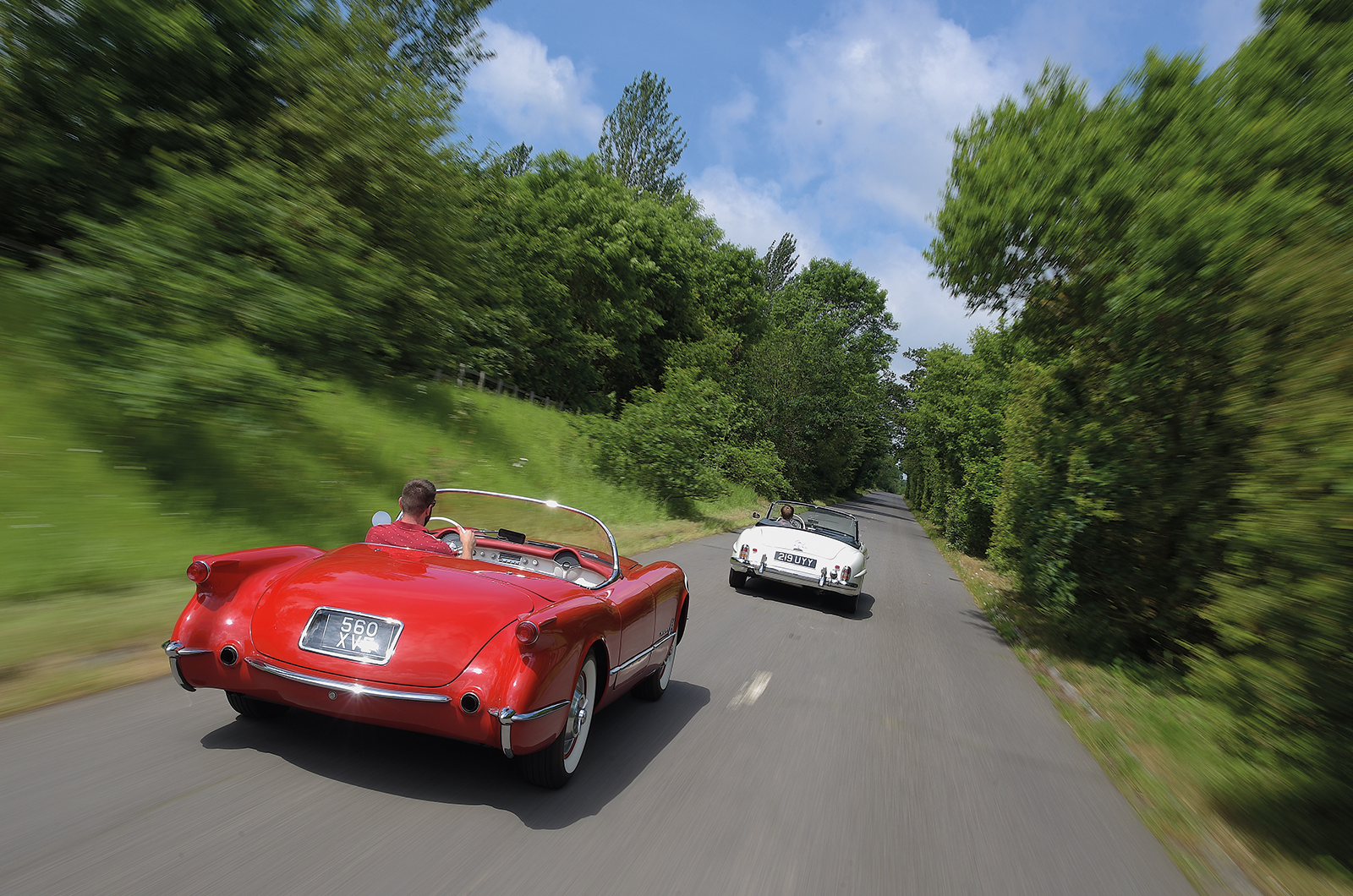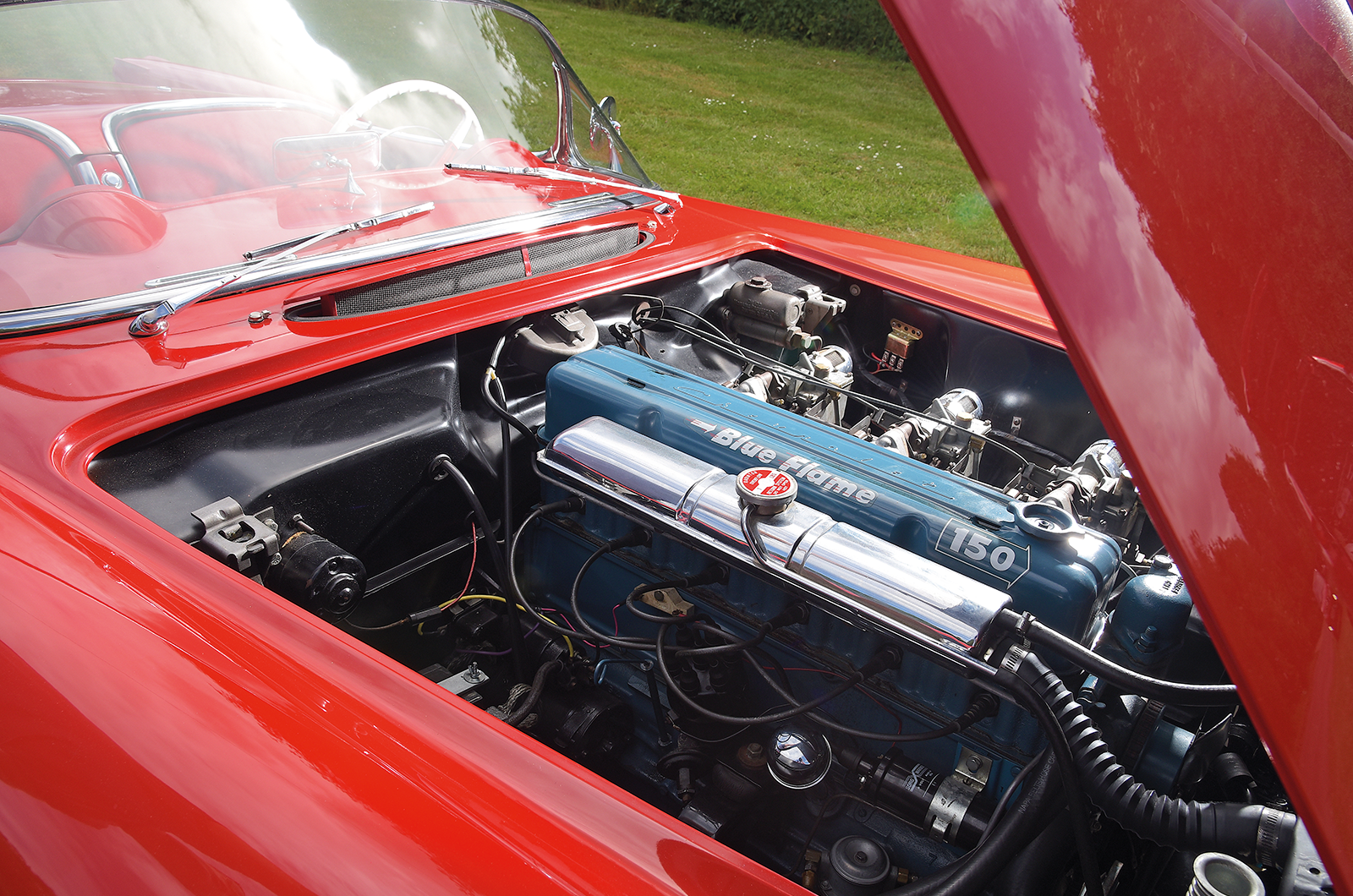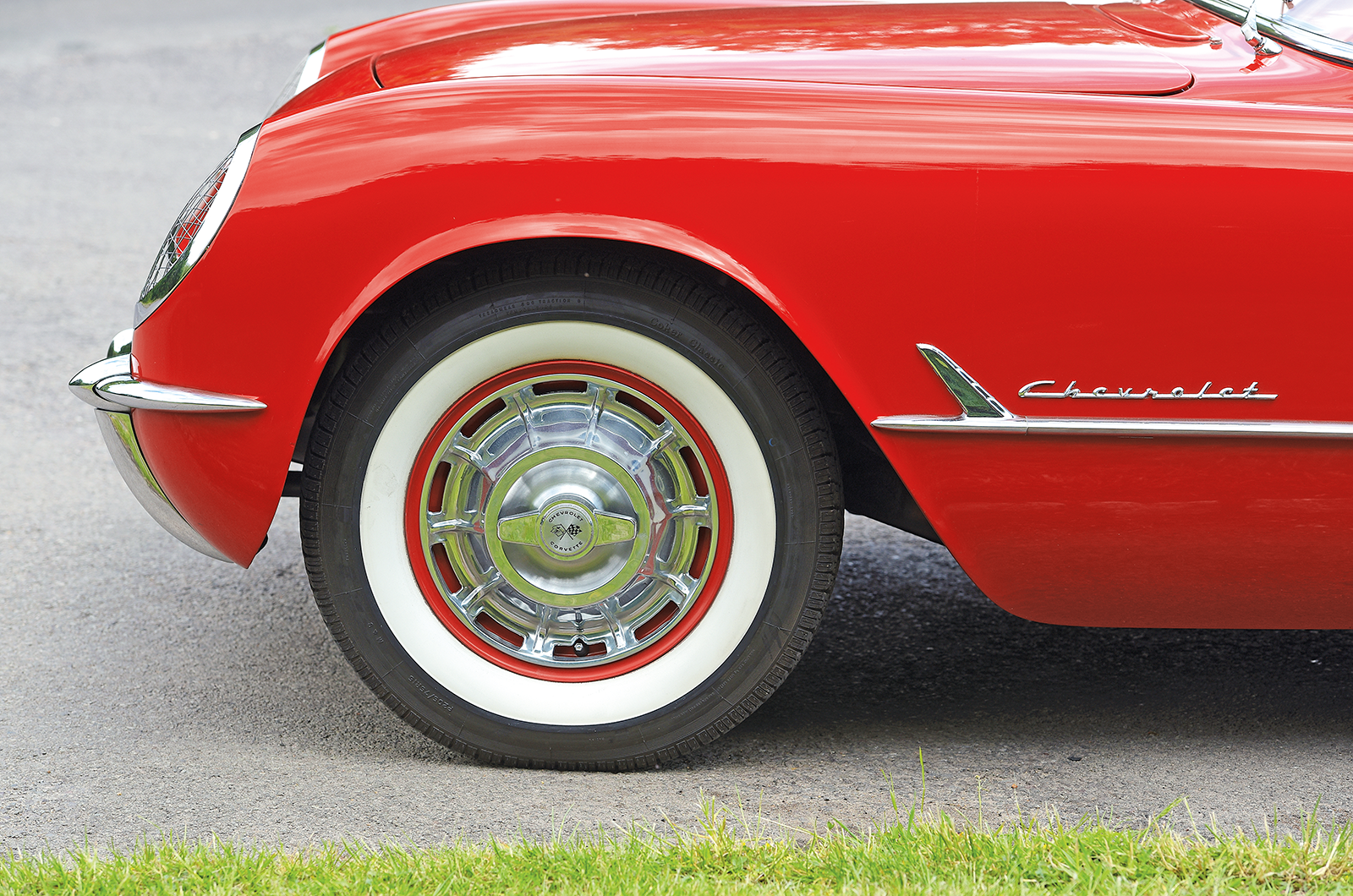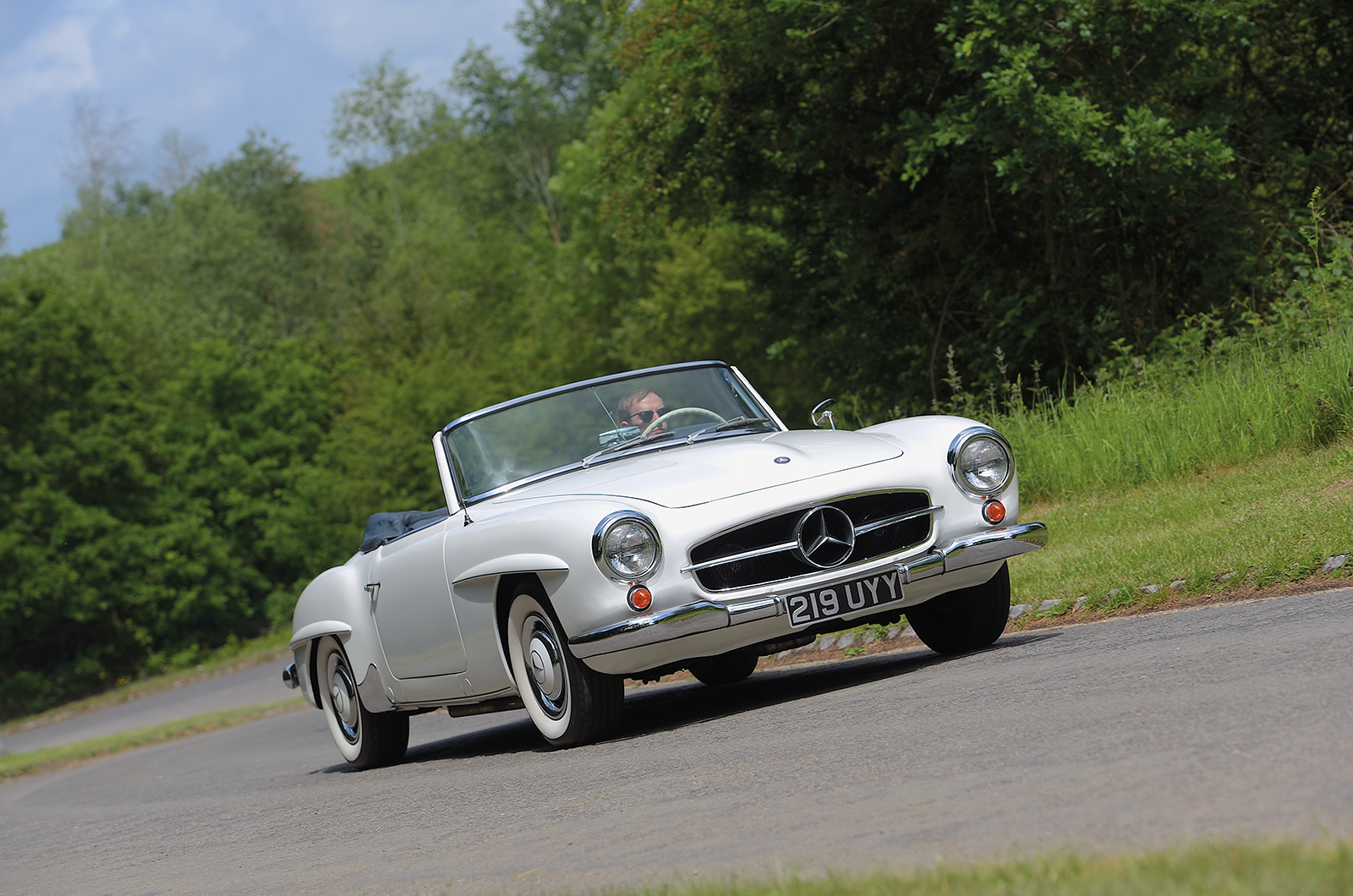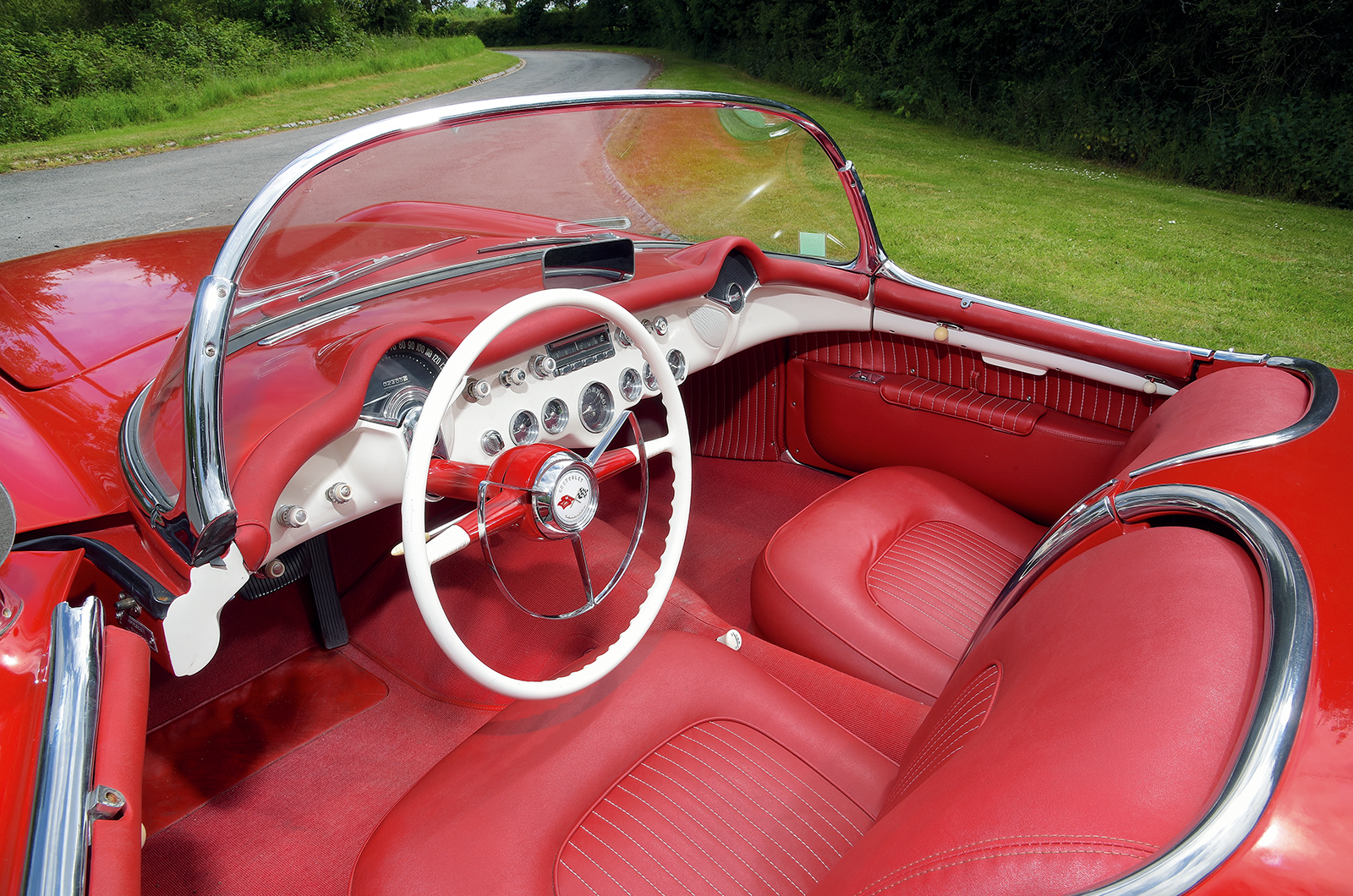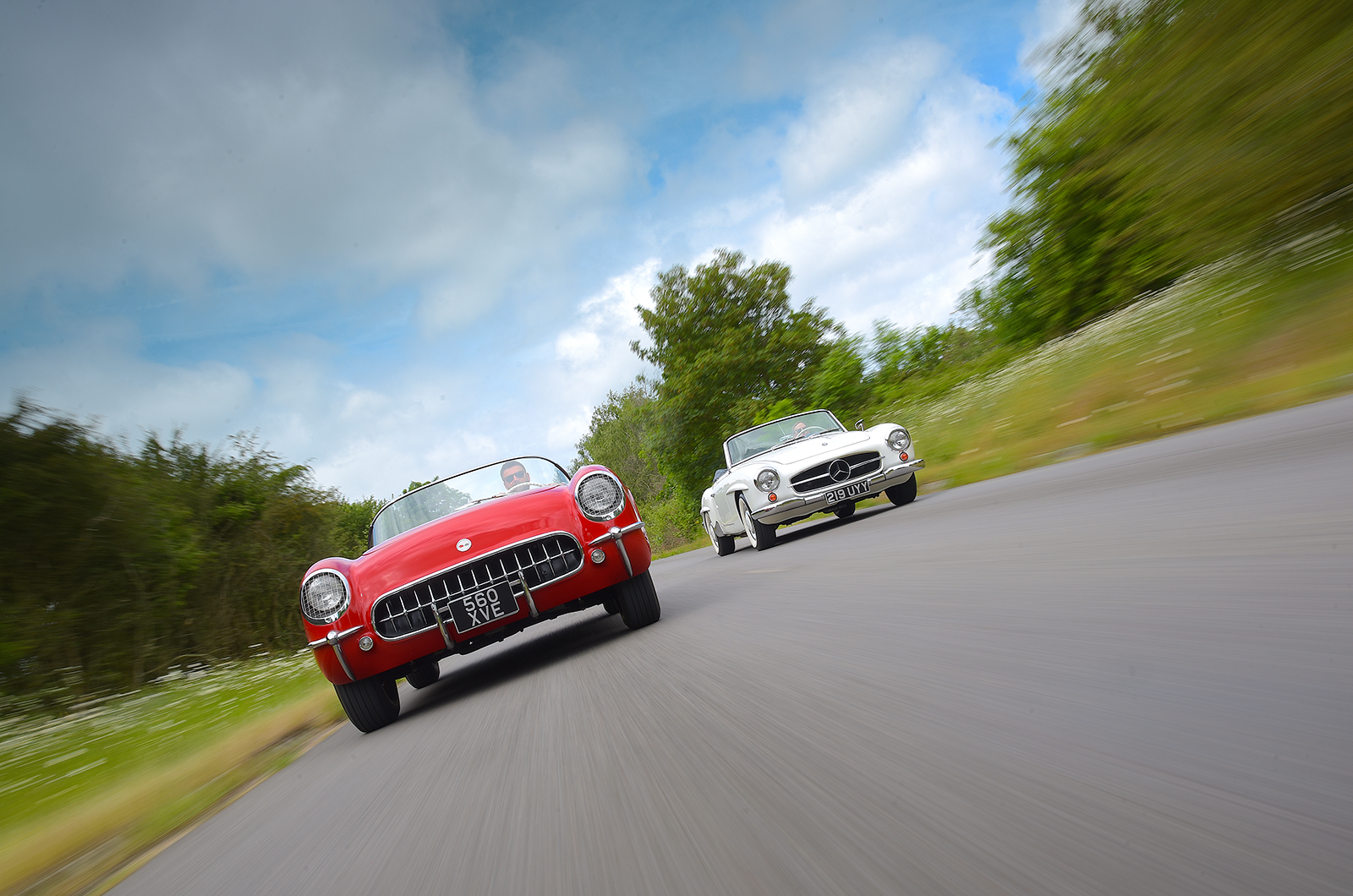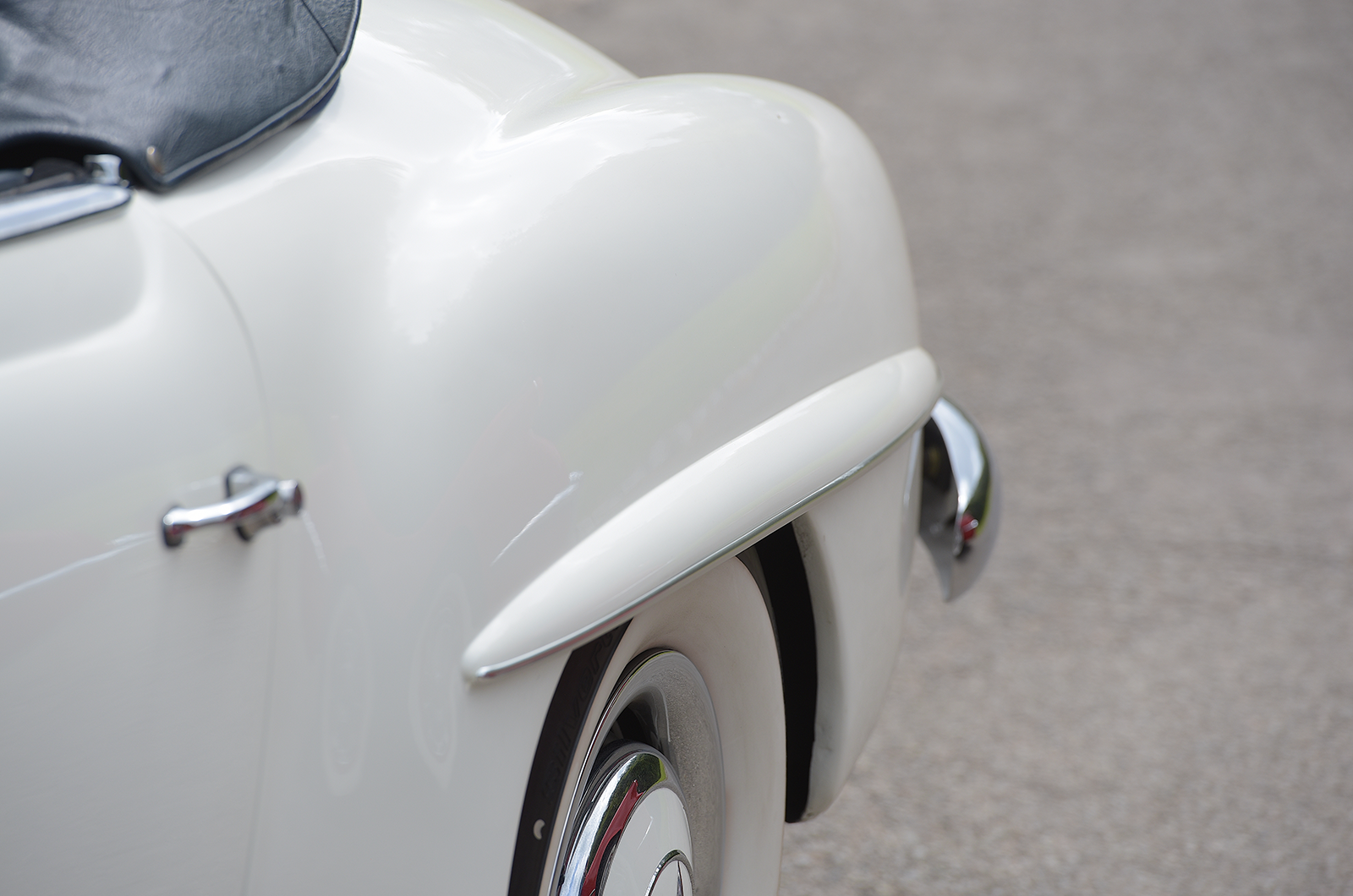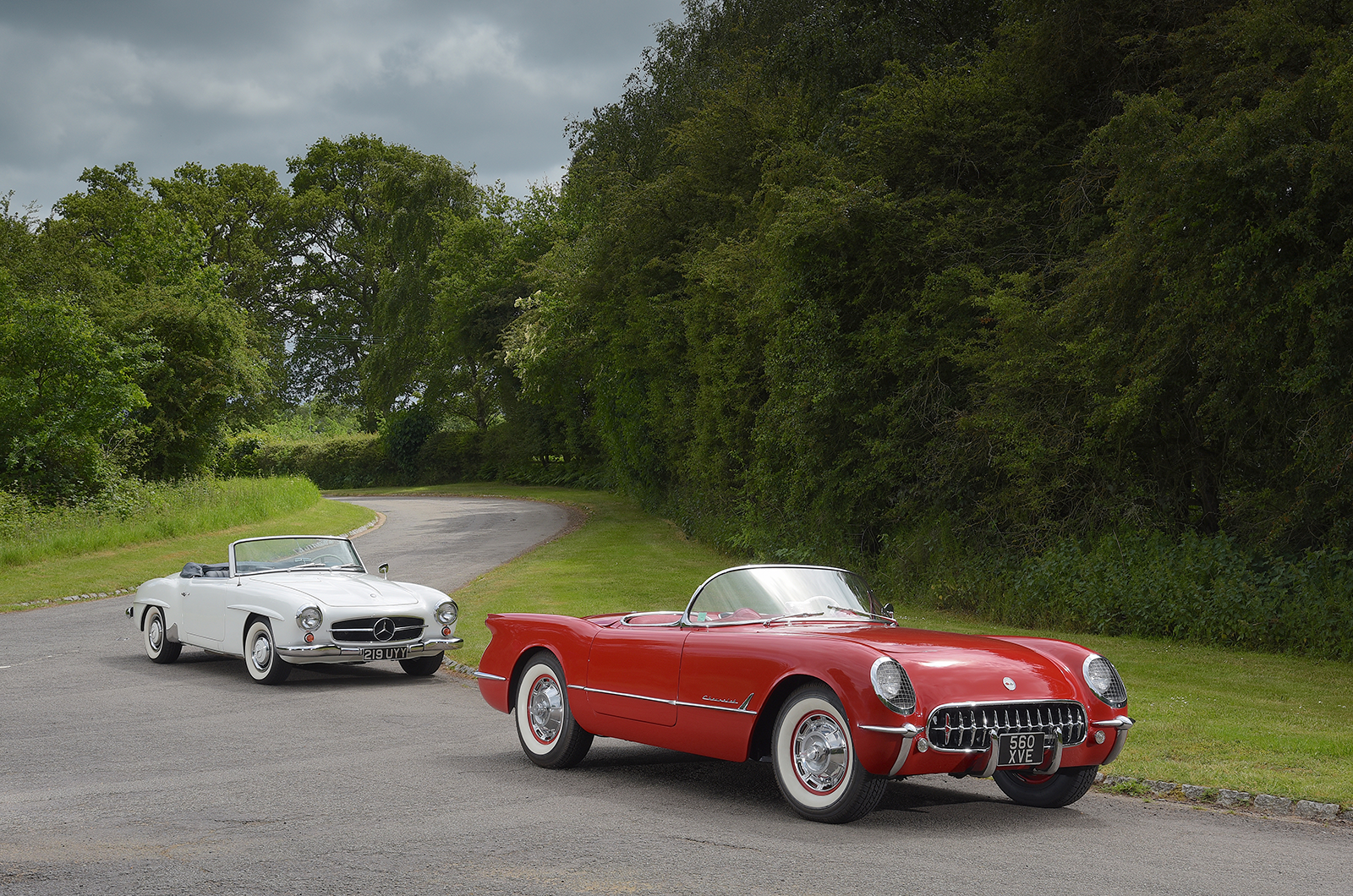Those touches disappeared when the sides gained their cutouts, and the lights regressed into the rear bodywork. Not unlike the exhausts, in fact, which nestle relatively high up.
As dictated by Chevrolet’s head of research and development, the Rolls-Royce trained Maurice Olley, and in search of a low centre of gravity and inertia, minimal body overhangs give the Corvette a stout face compared to the almost sharknose of the squat Mercedes.
Both are more easy cruisers than out-and-out sports cars
The 190SL looks classically beautiful cruising along country lanes, small but somehow wide, and would be a dream on those quiet afternoon drives, sunlight fading with the low sun.
The Corvette, meanwhile, feels more like the boulevardier it is, rumbling along comfortably rather than nipping through lanes.
It’s hard not to drift off and dream of West Coast roads, going nowhere in particular in no particular hurry.
It’s also the bigger draw of the two, with families stopping in their tracks to point at and ogle this bright, brash American, and other drivers tipping their imaginary hats.
It’s the Hollywood effect: while the Merc had its own list of stars, the ’Vette had ‘The Duke’ John Wayne.
Wheelarch details echo those on the 300SL
Both cars have always been rare on UK roads. Production of the C1 was slow: 300 were made that first year, a little more than 3000 the year after – including this Sportsman Red example.
Both have been blighted by bad press, the ’Vette for being slow and unreliable, the Mercedes for being slow and not a 300SL.
But that was exactly the point: the 190 was to be the 300SL that the common man could own, not least in the boom of post-war America.
You suspect that all misgivings would soon be put aside when you’re on the open road, though, and you’d forgive these two anything.
“The true aim of the 190SL and C1 was to contend with the inadvertent dominance of British sports cars in the USA”
The 190SL, pretty though it is, comes second in its own home behind the 300. It’s second here, too, despite being more than a third more expensive.
Not just for me, if a none-too-scientific straw poll is added in.
“It’s beautiful,” says one onlooker of the SL; the rest are consumed by the ’Vette, snapping away and posing alongside.
Maybe it’s because the C1 Corvette was the start of something in American sports cars, but, secretly or not, it’s something we all want.
Images: Will Williams
FACTFILES
Chevrolet Corvette C1
- Sold/number built 1953-’62/66,135
- Construction glassfibre body over steel chassis
- Engine all-iron, ohv 3861cc ‘six’, with three Carter carburettors
- Max power 150bhp @ 5200rpm
- Max torque 223lb ft @ 2400rpm
- Transmission two-speed Powerglide auto, driving rear wheels
- Suspension: front independent, by double wishbones, coil springs, anti-roll bar rear live axle, semi-elliptic leaf springs; telescopic dampers f/r
- Steering recirculating ball
- Brakes 11in (279mm) drums
- Length 14ft (4267mm)
- Width 5ft 10in (1778mm)
- Height 4ft 4in (1321mm)
- Wheelbase 8ft 5in (2590mm)
- Weight 2796lb (1265kg)
- 0-60mph 11 secs
- Top speed 107mph
- Mpg 16-20
- Price new £2896
- Price now £30-100,000
Mercedes-Benz 190SL
- Sold/number built 1955-’63/25,881
- Construction steel monocoque
- Engine iron-block, alloy-head, sohc 1897cc ‘four’, with two Solex 44PPHH carburettors
- Max power 105bhp @ 5700rpm
- Max torque 107lb ft @ 2800rpm
- Transmission four-speed manual, driving rear wheels
- Suspension independent, at front by double wishbones, anti-roll bar rear low-pivot swing axles; coil springs, telescopic dampers f/r
- Steering recirculating ball
- Brakes Alfin drums, with servo
- Length 13ft 10½in (4229mm)
- Width 5ft 8½in (1740mm)
- Height 4ft 4in (1321mm)
- Wheelbase 7ft 10½in (2400mm)
- Weight 2557lb (1160kg)
- 0-60mph 13 secs
- Top speed 109mph
- Mpg 26-31
- Price new £2896
- Price now £40-135,000
READ MORE
Luxury coupés: Mercedes 230CE vs Lotus Elite vs Lancia Gamma
Buyer’s guide: Chevrolet Corvette C3
Sunbeam Tiger vs Lotus Elan: brains or brawn?
Jack Phillips
Volvo-owning Jack Phillips is a contributor to and former Deputy Editor of Classic & Sports Car
